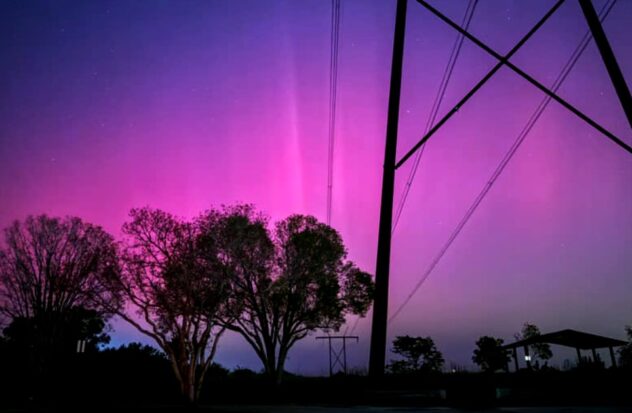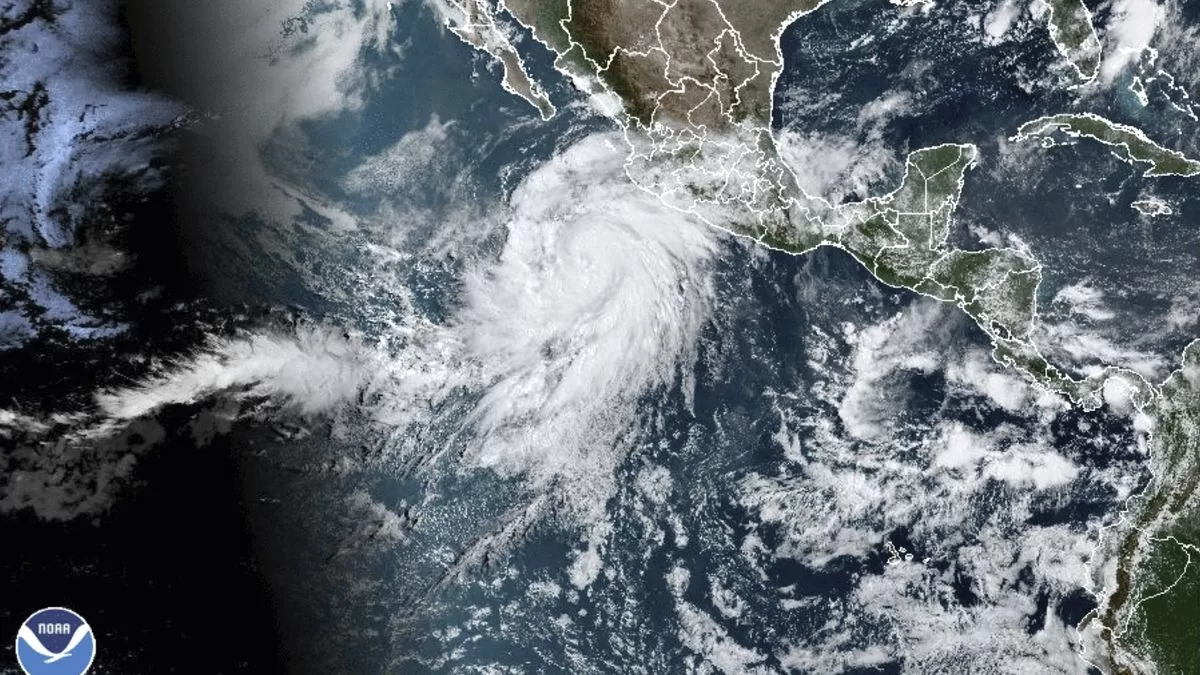The recent solar storm, classified as G5, the most intense since 2003, left spectacular images of the northern lights even in regions as far south as Florida and Alabama.
Defying the usual expectations of exclusive viewing at high latitudes, the phenomenon dyed the Florida night sky with pink and blue colors, leaving a play of iridescent colors that fascinated observers.
The natural phenomenon captured global attention due to its magnitude and its potential impact on terrestrial and space technology. According to Univision, auroras are visible due to an intense solar storm. “Dark and low-light places are ideal to observe them,” the outlet noted.
Coronal mass ejections, ejections of magnetically charged solar plasma from the Sun’s corona, have been particularly frequent and strong tonight, accelerated by a sunspot of considerable size, 16 times the diameter of the Earth, according to the National Bureau of Administration. Oceanic and Atmospheric (NOAA).
These particles interact with the Earth’s magnetic field, causing auroras and possible technological disruptions, the agency explained. AP.
In that sense, NOAA issued warnings to critical infrastructure operators, including power grids and satellite operators, due to the risk of disruptions.
Past events, such as the 2003 storm, have seen significant blackouts and damage to electrical transformers in various parts of the world. The threat persists today, since a storm of similar magnitude could affect both high voltage transmission lines and the precision and operability of satellite navigation and communications systems.
At the space level, the storm does not pose a serious threat to the crew of the International Space Station (ISS), although it does increase radiation levels, which could require astronauts to move to more protected areas of the orbital laboratory. NASA has also taken precautions with its scientific satellites, preparing temporary blackouts of the most sensitive instruments to avoid damage.
The current solar cycle, number 25, which began in December 2019, appears to be accelerating toward its peak more quickly than expected, which could explain the frequency and severity of recent solar storms. Each solar cycle, which lasts approximately 11 years, marks a periodicity in solar activity that culminates in maxima of events such as sunspots and coronal mass ejections.
NOAA scientists and meteorologists, along with international observatories and agencies, are closely monitoring this activity to provide updates and alerts. These observations are not only crucial for the mitigation of technological and operational risks, but also offer unique opportunities for scientific research into solar dynamics and its interaction with Earth.


